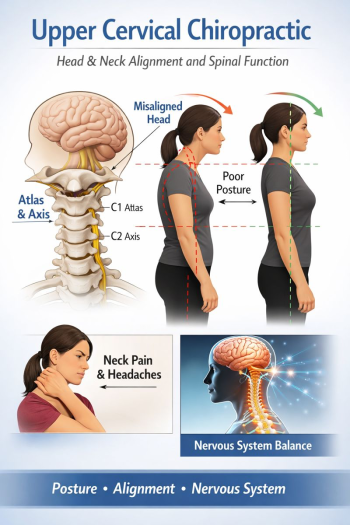
Carpal Tunnel Syndrome (CTS) is a widespread condition that can severely impact daily life, particularly for those involved in repetitive hand and wrist activities. It results from the compression of the median nerve as it travels through the carpal tunnel in the wrist, causing pain, numbness, and tingling in the hand and arm.
Managing CTS effectively requires a blend of medical treatments and self-care strategies. One promising approach is upper cervical chiropractic care, which focuses on the alignment of the spine's upper region to alleviate symptoms and promote overall health. This blog will explore best practices for managing Carpal Tunnel Syndrome with a special focus on upper cervical chiropractic care and ergonomic adjustments.
By downloading the Digital Patient Chart mobile app you can better control your patient portal.
Understanding Carpal Tunnel Syndrome
Carpal Tunnel Syndrome develops when the median nerve, which extends from the forearm to the palm, becomes compressed at the wrist. The carpal tunnel is a narrow passageway of ligaments and bones at the base of the hand. When the tissues around the flexor tendons swell, they narrow the tunnel and compress the median nerve, leading to the characteristic symptoms of CTS.
Upper Cervical Chiropractic Care for Carpal Tunnel Syndrome
Upper cervical chiropractic care emphasizes the health of the spine's uppermost region, particularly the alignment of the atlas and axis vertebrae. Proper alignment in this area can have a profound impact on the entire nervous system, including the median nerve affected in CTS.
1. Atlas and Axis Adjustments
Upper cervical chiropractors specialize in adjustments to the atlas (C1) and axis (C2) vertebrae. Misalignments in these vertebrae can affect nerve function throughout the body, including the median nerve. Correcting these misalignments helps to restore proper nerve function and reduce symptoms of CTS.
2. Nerve Function Optimization
By ensuring the upper cervical spine is properly aligned, chiropractors can optimize overall nerve function. This holistic approach can relieve pressure on the median nerve, reduce inflammation, and improve hand and wrist function.
3. Holistic Health Improvements
Upper cervical care is not limited to spinal adjustments. It often includes lifestyle and ergonomic advice to support overall health and prevent the recurrence of symptoms. This comprehensive care approach ensures that all contributing factors to CTS are addressed.
4. Ergonomic Recommendations
Upper cervical chiropractors guide ergonomic adjustments that can complement chiropractic care. Recommendations may include using supportive wrist braces, adjusting workstation setups, and practicing proper hand posture.
Personalized Care Plans
Effective management of Carpal Tunnel Syndrome requires personalized care plans tailored to individual needs. Each person's symptoms and health goals are unique, necessitating a customized approach.
1. Comprehensive Assessment
A thorough assessment is the first step in creating an effective care plan. This includes a detailed medical history, physical examination, and any necessary diagnostic tests to identify the root causes of CTS and any contributing factors.
2. Tailored Treatment Plans
Based on the assessment, an upper cervical chiropractor can develop a treatment plan that may include specific upper cervical adjustments, ergonomic advice, and other therapies. The plan should be adaptable, changing as the patient's condition improves or evolves.
3. Continuous Monitoring
Regular follow-up appointments are crucial for monitoring progress and making necessary adjustments to the treatment plan. This ensures that the care plan remains effective and responsive to the patient's needs.
Ergonomic Adjustments
Incorporating ergonomic adjustments into daily routines is vital for managing CTS effectively. These adjustments can reduce strain on the wrist and prevent symptoms from recurring.
1. Workstation Optimization
An ergonomic workstation setup is essential for preventing wrist strain. This includes adjusting the height of chairs and desks, using ergonomic keyboards and mice, and maintaining proper hand posture while typing.
2. Wrist Support
Using a supportive wrist brace can help keep the wrist in a neutral position, reducing pressure on the median nerve. Wrist braces are particularly beneficial during activities involving repetitive hand and wrist movements.
3. Hand Posture
Maintaining proper hand posture is critical for preventing CTS symptoms. This involves keeping the wrists straight and avoiding excessive bending or twisting. Regular breaks and stretching exercises can also help reduce wrist strain.
4. Regular Exercise
Regular exercise, particularly exercises that strengthen the wrist and improve flexibility, can help manage CTS symptoms. Incorporating these exercises into daily routines can enhance overall wrist health.
Combining Upper Cervical Chiropractic Care with Ergonomic Adjustments
The most effective approach to managing Carpal Tunnel Syndrome involves combining upper cervical chiropractic care with ergonomic adjustments. This integrated approach addresses both the underlying causes and the symptoms of CTS.
1. Holistic Approach
A holistic approach to managing CTS addresses all aspects of the condition, including symptom relief, underlying causes, and lifestyle changes to prevent recurrence.
2. Patient Education
Educating patients about the importance of ergonomic adjustments and proper hand posture is crucial for long-term management. Upper cervical chiropractors should provide patients with the knowledge and tools needed to manage their condition effectively.
3. Lifestyle Modifications
In addition to chiropractic care and ergonomic adjustments, lifestyle modifications such as maintaining a healthy weight, avoiding smoking, and managing other health conditions can contribute to effective CTS management.
Conclusion
Carpal Tunnel Syndrome can significantly impact daily life, but it can be effectively managed with the right combination of medical and self-care strategies. Upper cervical chiropractic care offers a non-invasive treatment option that can alleviate pressure on the median nerve and improve overall nerve function. Personalized care plans tailored to individual symptoms and health goals are crucial for effective management. Additionally, incorporating ergonomic adjustments in daily activities, such as using a supportive wrist brace and ensuring proper hand posture while typing, can complement chiropractic treatments for holistic management of CTS. By adopting a comprehensive approach, individuals can achieve long-term relief from symptoms and enhance their quality of life.









Leave a comment